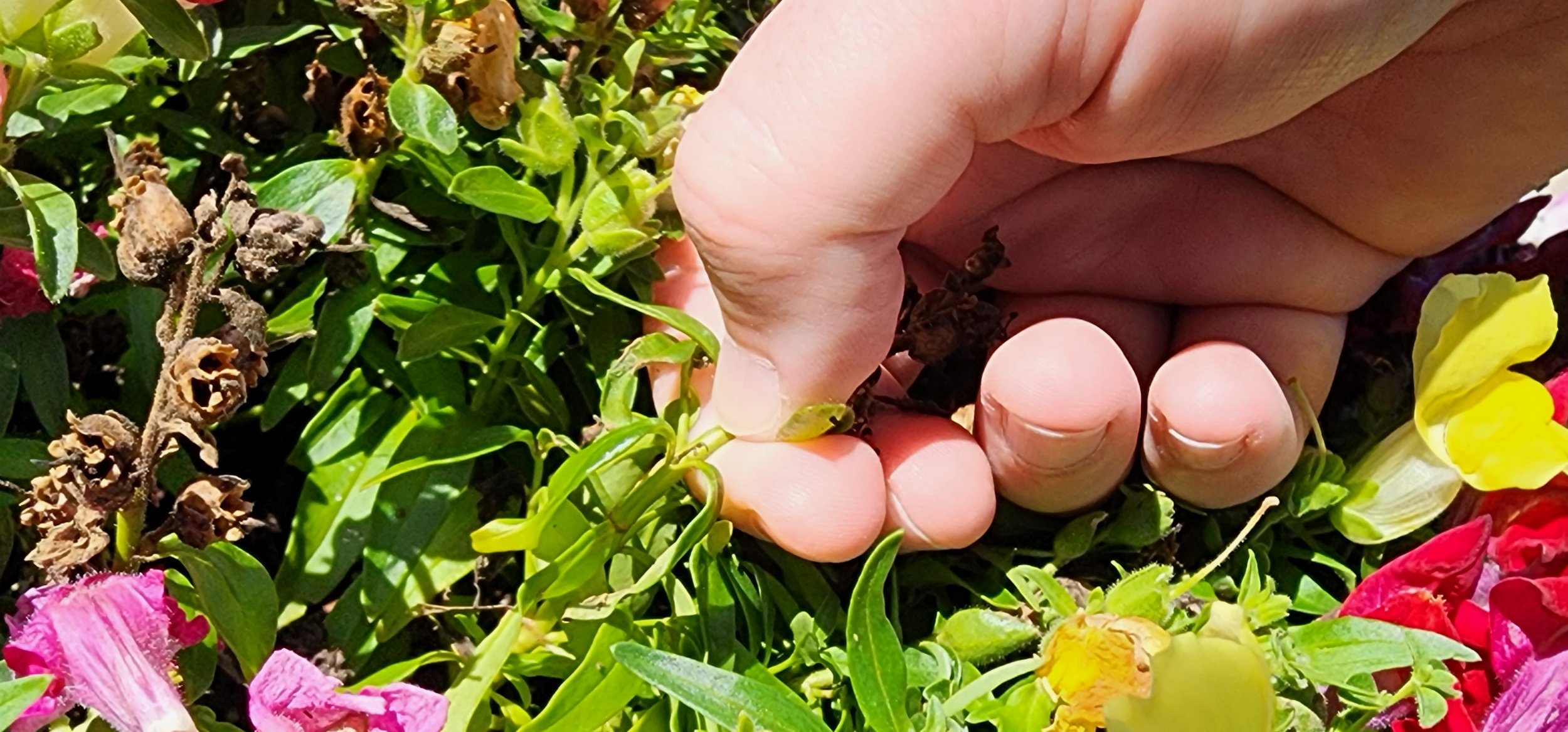Maximizing Mid-Season Growth for Annuals
Photo by John Morgan
Gardeners often take pride in their "green thumb," a term that signifies their skill and success in cultivating plants. A key component of this expertise is the seemingly simple practice of pinching spent blooms, or deadheading. The end result is, of course, a green thumb. To ensure that your annuals bloom profusely and remain healthy throughout the summer, deadheading and pruning are essential practices. This blog post will delve into the specifics of deadheading and pruning annual flowers, providing you with the knowledge to keep your garden looking its best and your thumb a little greener.
Why Deadheading and Pruning Matter
Photo by John Morgan
Deadheading
Deadheading is the removal of spent flowers from plants. This simple practice can have significant benefits for annuals:
Encourages Continuous Blooming: By removing faded flowers, you prevent the plant from setting seeds and encourage it to produce more blooms.
Enhances Appearance: Deadheading keeps plants looking tidy and vibrant.
Promotes Health: It helps to reduce the risk of diseases that can develop in decaying flowers.
Pruning
Pruning involves trimming back parts of the plant to promote better growth and structure. For annuals, pruning can:
Stimulate Growth: Cutting back leggy or overgrown parts encourages bushier growth.
Maintain Shape: Pruning helps maintain a desirable shape and size, preventing plants from becoming unruly.
Remove Unhealthy Parts: Eliminating dead, damaged, or diseased foliage promotes overall plant health.
Best Practices for Deadheading Annuals
Tools and Equipment
Before starting, gather the necessary tools:
Sharp Scissors, Pruners, or Your Thumb: For clean cuts.
Gloves: To protect your hands (optional depending on the plant.
Disinfectant or Hand Sanitizer: To clean tools and hands between deadheading and prevent disease spread.
Deadheading Techniques
Regular Inspections: Check your plants frequently, ideally once a week, to catch spent flowers early.
Pinch or Snip: For small flowers, you can pinch off the dead blooms with your fingers. For larger flowers, use scissors or pruners.
Best Practices for Pruning Annuals
Image via pxHere - CC0 Public Domain
Tools and Equipment
Sharp Pruners: Essential for making clean cuts without damaging the plant.
Gloves: For protection against rough or thorny stems.
Disinfectant: To clean your tools and prevent the spread of disease.
Pruning Techniques
Timing: Start pruning in early summer to shape plants and remove any early season damage.
Identify Leggy Growth: Look for stems that are too long and trim them back to promote bushier growth.
Cut at an Angle: Make cuts at a 45-degree angle just above a leaf node to encourage new growth.
Seasonal Considerations for Annuals
Early Summer
Deadheading: Begin deadheading early bloomers to promote continued flowering.
Pruning: Lightly prune to shape plants and remove any damaged parts from the spring.
Mid-Summer
Deadheading: Continue regular deadheading to keep plants blooming profusely.
Pruning: Trim back any overgrown or leggy growth to maintain shape and health.
Late Summer
Deadheading: Focus on removing the last of the spent blooms to encourage late-season flowers.
Pruning: Prepare plants for the end of the growing season by removing any diseased or heavily damaged parts.
Photo by John Morgan
Deadheading and pruning are crucial for maintaining the beauty and health of your annual flowers throughout the summer. By regularly removing spent blooms and trimming back overgrown parts, you can ensure that your annuals remain vibrant and productive. These simple practices not only enhance the visual appeal of your garden but also support the overall vitality of your plants. With your green thumb, you can enjoy a stunning display of annual flowers all summer long.




